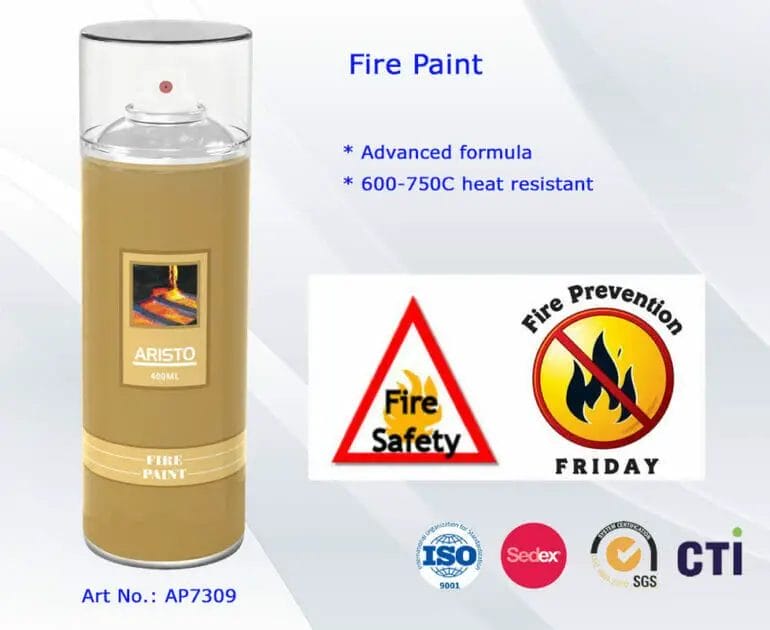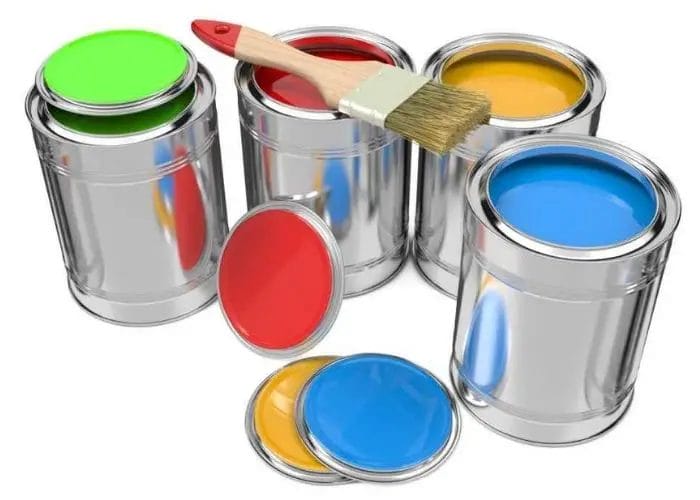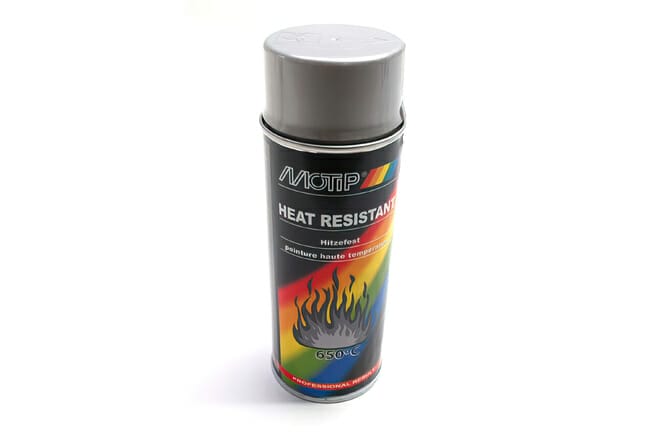Acrylic paint is known for its versatility and durability, but when it comes to heat resistance, there are some factors to consider. While acrylic paint can withstand moderate heat, it is not entirely heat resistant.
Excessive heat, such as direct exposure to flames or high temperatures, can cause acrylic paint to melt or bubble.
However, for most everyday uses, acrylic paint remains stable and can withstand normal heat levels without significant damage. Proper precautions should still be taken to protect acrylic-painted surfaces from extreme heat sources.

Factors Affecting the Heat Resistance of Acrylic Paint
Acrylic paint is a popular medium used by artists due to its versatility and vibrant colors. However, when it comes to heat resistance, there are several factors that can affect the performance of acrylic paint. Understanding these factors can help artists make informed decisions about the use and longevity of their artwork.
1. Pigment Composition
The type and quality of pigments used in acrylic paint play a significant role in its heat resistance. Some pigments, especially organic ones, may be more prone to fading or discoloration when exposed to high temperatures. On the other hand, inorganic pigments, such as titanium dioxide or iron oxide, tend to have better heat resistance properties.
Artists should be cautious when selecting acrylic paints with organic pigments if they intend to use their artwork in environments with high heat or direct sunlight. Opting for paints with inorganic pigments can provide better heat resistance and long-term color stability.
2. Binder and Additives
The binder used in acrylic paint, usually a polymer emulsion, is responsible for holding the pigment particles together and creating a film when the paint dries. The type and quality of binder can influence the paint’s heat resistance.
Some acrylic paints are formulated with additives such as extenders or flow improvers. These additives can alter the paint’s heat resistance characteristics. It is recommended to use acrylic paints that are specifically labeled as heat-resistant or suitable for high-temperature environments if the artwork will be subjected to heat stress.
3. Thickness of Paint Layers
The thickness of acrylic paint layers can affect their heat resistance. Thin layers of paint generally have better heat resistance compared to thick layers. This is because thick layers of paint can trap heat, potentially causing the paint to soften or even melt under high temperatures.
Artists should consider using multiple thin layers of paint instead of a single thick layer to improve the heat resistance of their artwork. Building up thin layers also allows for better control over color intensity and drying time.
4. Surface Preparation
The preparation of the painting surface can impact the heat resistance of acrylic paint. Properly priming the surface with a suitable primer can enhance the adhesion of the paint and improve its long-term durability, including heat resistance.
Artists should choose primers specifically designed for acrylic paints and follow the manufacturer’s instructions for application. This ensures a stable surface that can withstand heat without compromising the paint layer.
5. Environmental Conditions
The environmental conditions in which the artwork is displayed or stored can also affect the heat resistance of acrylic paint. Exposure to direct sunlight, high temperatures, or fluctuations in temperature can accelerate the degradation of the paint over time.
If the artwork will be exposed to these conditions, taking preventive measures such as using UV-protective varnishes or displaying the artwork in a controlled environment can help preserve its heat resistance and overall quality.
In summary, the heat resistance of acrylic paint is influenced by the pigment composition, binder, thickness of paint layers, surface preparation, and environmental conditions. Artists should consider these factors when selecting materials and creating artwork that may be exposed to high temperatures. By understanding and taking appropriate measures, artists can ensure the longevity and heat resistance of their acrylic paint creations.
Using Acrylic Paint in High Temperature Applications
Acrylic paint is a versatile and popular choice for many artistic and industrial applications. Its quick drying time, vibrant colors, and ability to adhere to a variety of surfaces make it a preferred choice for artists and craftsmen alike. However, one common concern is whether acrylic paint can withstand high temperatures without compromising its quality and durability.
In this section, we will explore the use of acrylic paint in high temperature applications, addressing its suitability, limitations, and recommended practices.
Suitability of Acrylic Paint for High Temperature Applications
Acrylic paint, by nature, has a lower resistance to heat compared to other types of paint, such as enamel or epoxy. While acrylic paints are generally robust and can withstand moderate temperatures, they may not be suitable for applications that involve constant, extreme heat.
However, it is important to note that the heat resistance of acrylic paint can vary depending on factors such as the specific brand, formulation, and thickness of the paint layer. Some acrylic paints are specifically designed to withstand higher temperatures, offering better heat resistance compared to standard acrylic paints.
Limitations of Acrylic Paint in High Temperature Applications
When exposed to high temperatures, acrylic paint may undergo certain changes that can affect its appearance and performance. The most common limitations of acrylic paint in high temperature applications include:
- Color Fading: High temperatures can cause acrylic paint to fade or change color over time. This can be particularly problematic for artwork or projects that require long-term color stability.
- Surface Damage: Prolonged exposure to high temperatures can lead to the deterioration or cracking of acrylic paint. This is especially true for applications where the paint is subjected to thermal cycling or rapid temperature changes.
- Bond Failure: Acrylic paint may experience bond failure when exposed to extreme heat, resulting in poor adhesion to the underlying surface.
Recommended Practices for Using Acrylic Paint in High Temperature Applications
If you need to use acrylic paint in a high temperature application, here are some recommended practices to enhance its performance and longevity:
- Choose Heat-Resistant Acrylic Paint: Look for acrylic paints that are specifically labeled as heat-resistant or suitable for high temperature applications. These paints are formulated to withstand elevated temperatures and are more likely to maintain their color and integrity.
- Apply Thin Layers: To minimize the risk of surface damage and bond failure, apply thin layers of acrylic paint. Thick layers are more prone to cracking or peeling when exposed to high temperatures.
- Use Proper Primers and Sealers: Preparing the surface with appropriate primers and sealers can improve the adhesion and heat resistance of acrylic paint. Consult the manufacturer’s instructions or seek expert advice to determine the most suitable products for your specific application.
- Avoid Direct Flame or Heat Sources: While acrylic paint may tolerate high temperatures to some extent, it is crucial to avoid direct exposure to open flames or direct heat sources. Positioning the painted object away from intense heat can help prevent damage.
- Regular Maintenance and Inspection: For long-lasting results, regularly inspect the painted surface for any signs of damage or color fading. Promptly address any issues to prevent further deterioration.
It is worth noting that if your application involves extremely high temperatures or continuous exposure to heat, it may be more appropriate to consider specialized paints specifically designed for those conditions, such as heat-resistant coatings or ceramic paints.
While acrylic paint can be used in high temperature applications, its performance and durability may be compromised compared to paints specifically formulated for extreme heat. By selecting heat-resistant acrylic paints, applying thin layers, using proper primers and sealers, avoiding direct heat sources, and conducting regular maintenance, you can maximize the longevity and quality of acrylic paint in high temperature environments. However, for applications involving continuous high temperatures, it is advisable to explore specialized paints that offer superior heat resistance.
Tips for Enhancing the Heat Resistance of Acrylic Paint
Acrylic paint is a popular choice among artists due to its versatility, vibrant colors, and quick drying time. However, one limitation of acrylic paint is its sensitivity to high temperatures. Excessive heat can cause the paint to become tacky, soften, or even melt, compromising the artwork’s integrity. To enhance the heat resistance of acrylic paint and ensure its longevity, here are some useful tips:
1. Choose Heat-Resistant Acrylic Paint
Not all acrylic paints are created equal when it comes to heat resistance. Some brands offer specially formulated heat-resistant acrylic paints that can withstand higher temperatures. These paints contain additives that improve their ability to withstand heat without compromising their color or consistency.
2. Apply Thin Layers
When painting with acrylics, it’s important to apply thin layers rather than thick, heavy coats. Thick layers are more prone to heat damage as they take longer to dry and may retain more moisture. By applying thin layers, the paint dries faster and reduces the risk of heat-related issues.
3. Allow Sufficient Drying Time
Proper drying time is crucial to ensuring the durability of acrylic paint. Before subjecting your artwork to heat, make sure it has fully dried and cured. Depending on the thickness of the paint layers, this can take anywhere from a few hours to several days. Follow the manufacturer’s instructions for optimal drying time.
4. Avoid Direct Heat Sources
To protect your acrylic artwork from heat damage, it’s essential to keep it away from direct heat sources such as stoves, radiators, or direct sunlight. Exposure to high temperatures can cause the paint to soften or melt. Store your artwork in a cool, dry place and avoid displaying it in areas prone to heat.
5. Use Heat-Resistant Varnish
Applying a heat-resistant varnish on top of your acrylic painting can provide an extra layer of protection against heat. Heat-resistant varnishes are specifically formulated to withstand high temperatures and can help shield the paint from heat-related damage. Follow the manufacturer’s instructions for proper application.
6. Avoid Extreme Temperature Changes
Rapid temperature changes can be detrimental to acrylic paint. Avoid exposing your artwork to sudden shifts in temperature, such as moving it from a cold environment to a hot one. These temperature fluctuations can cause the paint to contract or expand, leading to cracking or other forms of damage.
7. Handle with Care
When transporting or storing acrylic artwork, handle it with care to prevent accidental damage. Avoid placing heavy objects on top of paintings, as this can lead to warping or cracking. Additionally, use acid-free archival materials for framing and storing artwork to ensure its long-term stability.
8. Test Before Heat Exposure
If you’re uncertain about the heat resistance of your acrylic paint or need to subject it to higher temperatures for a specific project, it’s wise to conduct a test beforehand. Create a small sample piece using the same materials and techniques, and subject it to the desired temperature to assess its resilience.
In summary, enhancing the heat resistance of acrylic paint involves selecting heat-resistant paint, applying thin layers, allowing sufficient drying time, avoiding direct heat sources, using heat-resistant varnish, avoiding temperature changes, handling with care, and conducting tests when needed. By following these tips, you can ensure that your acrylic artworks remain vibrant and intact even in high-temperature environments.
Exploring Heat Resistant Alternatives to Acrylic Paint
Acrylic paint is a popular choice for artists due to its versatility and vibrant colors. However, one limitation of acrylic paint is its vulnerability to heat. When exposed to high temperatures, acrylic paint can soften, melt, or even bubble, which can lead to irreversible damage to the artwork. This is particularly problematic for artists who work with heat-based techniques or use their artwork in hot environments.
Fortunately, there are several alternative options available for artists who require heat-resistant paints. These alternatives not only withstand high temperatures but also offer unique properties that can enhance the artistic process. Let’s explore some of the most noteworthy alternatives to acrylic paint:
1. High-Temperature Resistant Ceramic Paint
Ceramic paint is specifically formulated to withstand extreme heat without any compromise in color or texture. It is commonly used for painting on ceramic objects, such as pottery, but it can also be applied to other heat-resistant surfaces like metal or glass. Ceramic paint bonds with the surface and forms a durable, heat-resistant coating that can withstand temperatures up to 2000°F (1093°C). This makes it an excellent choice for artists who work with kilns or incorporate heat in their artistic process.
2. Enamel Paint
Enamel paint is another heat-resistant alternative to acrylic paint. It is made from a combination of pigment and resin, which provides a hard and glossy finish once cured. Enamel paint can withstand high temperatures and is often used for painting automotive parts, metal objects, and household appliances. Its durability and resistance to heat make it suitable for artists who require long-lasting and heat-resistant artwork.
3. Oil-Based Paint
Oil-based paints, such as oil paints, offer excellent heat resistance due to their composition. These paints contain pigments suspended in oil, usually linseed oil, which provides a protective layer over the artwork. Oil-based paints are known for their slow-drying nature, which allows artists to work with them for extended periods. They also offer rich colors and texture variations, making them ideal for artists who seek depth and complexity in their artwork.
4. Heat-Set Fabric Paint
For artists who work primarily on fabric or textiles, heat-set fabric paint is a fantastic alternative to acrylic paint. This type of paint is specifically designed to withstand washing and ironing without fading or peeling. Heat-set fabric paint is applied to fabrics using various techniques such as brushwork, stenciling, or screen printing. Once the paint has been applied, it is set using heat, typically with an iron, to bond the pigment to the fabric fibers. This heat-setting process ensures the paint’s durability, even when subjected to high temperatures.
5. Silicone-Based Paint
Silicone-based paint is a relatively new alternative to acrylic paint, particularly for artists experimenting with fluid art techniques. This type of paint is composed of pigments suspended in a silicone emulsion, which creates a glossy and heat-resistant finish. Silicone-based paints are known for their self-leveling properties, allowing artists to create smooth and seamless surfaces. They are also highly resistant to heat, making them suitable for applications where acrylic paint may fail.
In summary, while acrylic paint is a versatile medium for artists, its vulnerability to heat can limit its use in certain applications. Artists who require heat-resistant alternatives can explore options such as high-temperature resistant ceramic paint, enamel paint, oil-based paint, heat-set fabric paint, and silicone-based paint. Each of these alternatives offers unique characteristics and can open up new creative possibilities for artists working with heat-based techniques or in hot environments.

Is acrylic paint heat resistant?
Acrylic paint is not inherently heat resistant as it is a water-based paint. However, once it dries and cures, it can withstand moderate heat up to around 200-300 degrees Fahrenheit without melting or distorting.

Conclusion
In conclusion, while acrylic paint is known for its versatility and durability, it is not inherently heat resistant. Although it can withstand moderate temperatures, exposure to high heat can cause acrylic paint to melt or become discolored.
It is advisable to keep acrylic painted objects away from direct heat sources such as stovetops or ovens to prevent damage.
However, if you wish to enhance the heat resistance of your acrylic painted surface, applying a clear varnish or using heat-resistant acrylic paint can provide additional protection. Remember to always follow the manufacturer’s instructions and test a small area before exposing your acrylic painted creations to heat.
